February is Black History Month, and it’s the perfect time to learn about some amazing trailblazers in American history. We all grew up learning about Harriet Tubman and Frederick Douglass in school, but what about Bessie Coleman or Percy Julian? Here are seven profiles of great African-American scientists, politicians, explorers, entrepreneurs, innovators, and more!

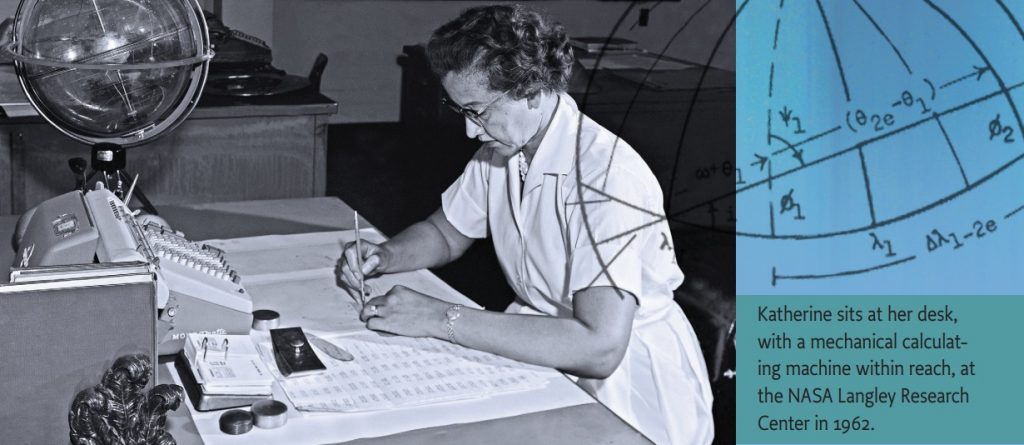
Katherine Johnson- Building a path to the moon
Katherine Goble Johnson passed away this February 24 at 101 years of age. In honor of her extraordinary life, she deserves pride of place on top of this list. Although her mathematical skills ensured the success of the Apollo 11 moon landing, Johnson received little credit or fame for her achievements for decades.
Born Creola Katherine Coleman in 1918, young Katherine showed signs of great promise from an early age. In fact, she was so bright that she skipped several grades and started high school at age 10 and graduated West Virginia State College with highest honors at age 18! She was the first African-American woman to be accepted to graduate school at West Virginia University.
A monumental career
When she accepted a position as a ‘computer’—a person who completes complex mathematical calculations—at Langley Research Laboratory in Hampton, Virginia, she had no idea that her work would change the world forever. Although she dealt with racially-segregated facilities and rules that allowed only men to attend meetings and publish research papers, Johnson soon became the first African-American woman to attend the engineers meeting and join the Space Task Group. She was also the first woman in the Flight Research Division to receive credit as the author of a research report.
But her most spectacular work was yet to come. When NASA sent Alan Shepherd on a suborbital flight into space, it was Johnson’s job to chart the mission’s trajectory. When it came time for a more challenging orbital flight, the necessary calculations were even trickier. Although NASA had developed computing machines to do the job, astronaut John Glenn demanded that Katherine Johnson review the calculations. “If she says they’re good, then I’m ready to go,” he said. In less than two days, Johnson had her results: the mission was ready to go!
To the moon!
Six years later, Johnson helped with her biggest mission yet: the moon landing. One of her most important jobs was working out what time the lunar module needed to lift off from the moon to rejoin the command module for the return home. Landing on the moon was only half the battle. NASA needed to bring the men back, too. Once again, Johnson’s calculations were flawless.
She worked at NASA for 33 years. In 2015, she received the Presidential Medal of Freedom from President Barack Obama. Hidden Figures, a film about her and other human ‘computers’ at NASA, was released in 2016 and was nominated for three Academy Awards. And in 2017, NASA opened the Katherine G. Johnson Computational Research Facility at Langley Research Center.
Read more about Katherine Johnson in this article from CRICKET Magazine.

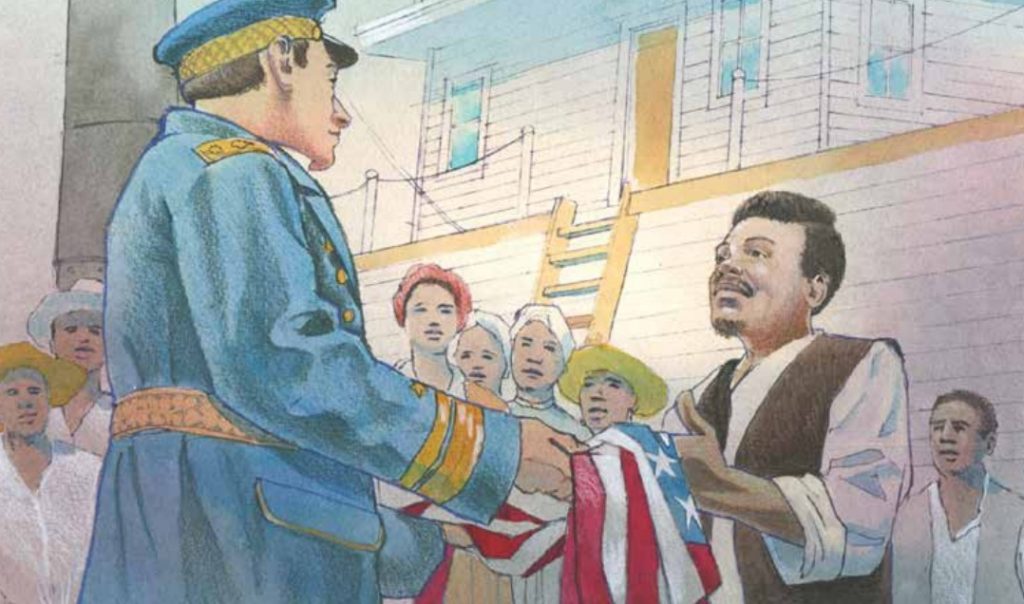
Robert Smalls- From slave to Congressman
Robert Smalls may be the most daring war hero that you’ve never heard of. Although he was born into slavery in South Carolina, Smalls seized an opportunity to free himself, his family, and many others, too. Smalls, an enslaved man who was forced to work on a steamboat called the Planter by Confederate Captain Charles Relyea, had been taught to pilot the ship. A crewman had once playfully dropped the captain’s hat onto Smalls’ head, a momentary joke that gave him a very serious idea. He was of similar size and build to Captain Relyea. Could he pass for the man in bad light and from a distance?
Taking a chance
One night in 1861, Captain Relyea and his officers disobeyed orders and went to spend the night with their families onshore, leaving only enslaved workers on the ship. This was the moment that Smalls and the crew had been waiting for. He embarked on a mission to steal the Planter and pilot it to the Union navy blockade ten miles away, where he would return four captured Union cannons.
First, they had to pass Confederate Fort Johnson. Smalls, disguised as the captain, waved at the sentry on duty and was allowed to pass. Fort Sumter proved a bigger challenge. Confederates had set up log barriers in the bay so that no ship could pass without floating under the guns that lined Sumter’s walls. Luckily, Smalls knew the signals that would let the Confederates know that he was a friend—two long and short toots of the ship’s whistle. He was allowed through. But instead of heading to Confederate-held Morris Island, the Planter headed toward the Union blockade at full steam. The alarm was sounded at Fort Sumter, but it was too late.
Success!
When they arrived at the blockade, Smalls flew a flag of surrender and greeted Union Captain John Nickels, saying, “Good morning, sir! I’ve brought you some of the United States guns, sir!” He also turned over a book of Confederate codes and shared vital information about rebel troops’ locations. Soon, Smalls became the pilot of the Planter at a salary of forty dollars a month. He made speeches in Washington DC to raise money for former slaves, met President Abraham Lincoln, and wrote an order authorizing the formation of the first unit of black soldiers in the U.S. Army.
Smalls continued to serve as a ship’s pilot throughout the rest of the Civil War and later bought the home of the man who had once enslaved him. He ran for Congress and won, serving five terms from 1875 to 1887, and later became the U.S. Customs Collector for Beaufort.
Read Robert Smalls’ amazing story here in this article from the latest issue of CRICKET Magazine.


Ann Lowe- She dreamed of dresses
When John F. Kennedy married Jacqueline Bouvier in 1953, all eyes were on the bride’s beautiful gown. It was designed by an accomplished African-American dressmaker named Ann Lowe.
An inspired imagination
Born in Alabama in 1898, Ann grew up surrounded by beautiful gowns. Her mother and grandmother made the money her family needed by sewing dresses for the elite white women of Alabama’s capital. But Ann didn’t just wan to sew fine dresses. She wanted to become a renowned fashion designer in New York City. She was so passionate about designing that she would dream up gowns while she was sleeping and have to jump out of bed and draw it to remember it the next day.
One day, when she was 17, Ann happened to wear one of her own creations on a trip to department store. It was an ordinary day until an elegantly dressed white woman approached her. Her name was Josephine Edward Lee, and she was so impressed with Ann’s outfit that she wanted to know where she could find one like it. When Ann told her that it was her own design, Mrs. Lee invited her to move down to Tampa and create gowns for her family. She did just that, and soon, all of their society friends wanted her gowns, too!
When she was 19, Ann enrolled in a fashion design school in New York City, finishing the one-year course in just six months. After 12 more years as a designer in Tampa, Ann finally achieved her dream of opening her own studio in New York City. Soon, the ladies from America’s wealthiest families were begging to buy her one-of-a-kind gowns.
A legendary creation
Her greatest success as a designer was almost her greatest disaster! For two months, she and her seamstresses worked tirelessly to create a gorgeous wedding gown for Jacqueline Bouvier, as well as 15 bridesmaids’ dresses. But only ten days before the wedding, calamity struck! A pipe had burst in the ceiling of her workroom, ruining the bridal gown and ten of the bridesmaids’ dresses! But Ann was determined. She and her seamstresses worked day and night to remake the dresses and deliver them on time to the bride’s family. She never told them about what had happened.
Although Jacqueline’s gown was praised in newspapers around the nation, not one of them mentioned Ann Lowe’s name. It wasn’t until the 1960’s that her name became widely known as a great designer. But the thousands of gorgeous dresses that she created spoke for her exceptional skill and creativity.
Read Ann Lowe’s story here in February’s issue of CRICKET Magazine.

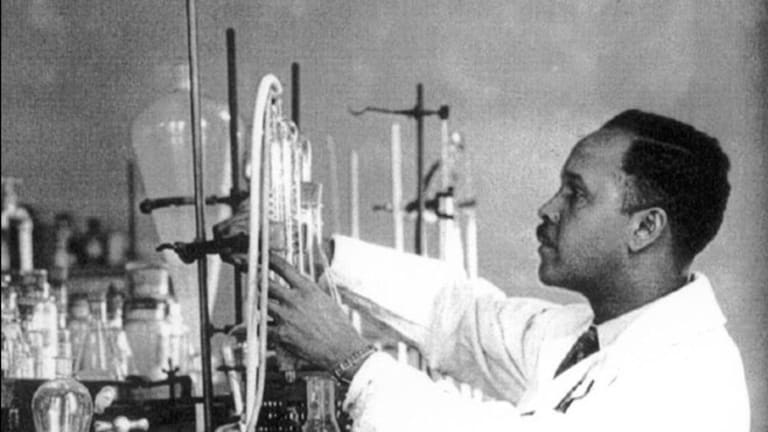
Percy Julian- a genius with beans
Dr. Percy Lavon Julian pioneered so many different kinds of medicine that it’s hard to believe he did it all in just one lifetime. He received more than 130 chemical patents and helped create some of the items you’re most likely to see in an average medicine cabinet.
The power of education
Born in Alabama in 1899, Julian was raised in a family that always valued education and encouraged their children to attend college. His mother was a schoolteacher and his father worked as a railroad postal clerk. Julian was accepted to DePauw University in Indiana. One of the few African-American students attending the school, he was not allowed to live in college dormitories or eat meals at the boarding house where he lived. Regardless, he graduated as a Phi Beta Kappa and valedictorian.
Unable to find opportunities to complete a Ph.D. in the United States, he received a Rockefeller Foundation fellowship to attend the University of Vienna in Austria. He was the fourth African-American person to receive a doctorate in Chemistry.
Revolutionizing pharmacy
As a new chemist, Julian felt confident that he could reproduce an alkaloid molecule found in the calabar bean. So he challenged one of the mightiest chemists of the mid-1900s, Sir Robert Robinson, who had studied the calabar bean’s alkaloid molecule and declared that it couldn’t be artificially made. Julian proved the older chemist wrong. Atom by atom, he deconstructed the bean’s alkaloid molecule, making it possible to synthesize the alkaloid physostigmine, which is used as a treatment for an eye disease called glaucoma. He also discovered that the calabar bean and soybean could be used to synthesize human hormones. Julian found a simpler and less expensive way to synthesize cortisone, a steroid treatment for rheumatoid arthritis.
His work with soybean proteins led to the invention of Aero-Foam, a product that stopped fires fast. It was used to smother blazes on Word War II battleships and aircraft carriers. Sailors called Aero-Foam “bean soup.”
Later in life
Eventually, Julian moved to Oak Park, a suburb of Chicago, and opened his own research firm, Julian Laboratories, Inc. After selling the company for the equivalent of $20 million in today’s money, he continued to conduct research for the rest of his life. In 1973, he was elected to the National Academy of Sciences, becoming the second African-American person inducted. He was inducted into the National Inventor’s Hall of Fame in 1990 and several schools and academic buildings have been named for him.
Discover great scientists of the past, present, and future with MUSE Magazine.

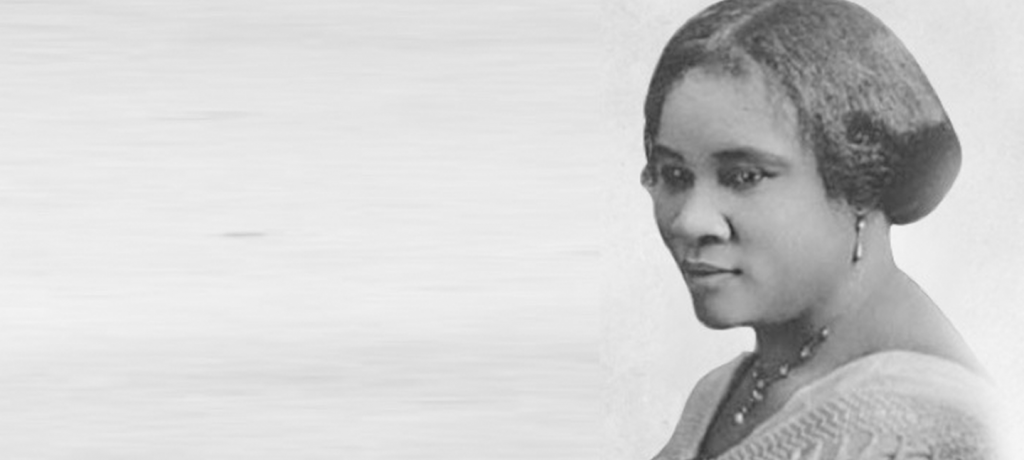
Madame CJ Walker- founder of a beauty empire
At the turn of the 20th century, Sarah McWilliams Walker worked as a washerwoman in St. Louis for only $1.50 a day. The daughter of impoverished parents who died when she was only six years old, she dreamed of a better life for herself and her daughter.
A better way to care for hair
At the time, bigoted attitudes toward black women’s hair forced many black women to straighten their hair with an iron to appear socially acceptable. Irons were heavy and the temperature was hard to control. Many women burned their hair or their skin. Determined to solve this problem, Sarah invested a day’s wages in some special herbs and used a trial and error method to mix the ingredients to a hair ointment that made styling easier and hair softer without removing the curl. She also invented and patented a metal heating comb and sold her products door to door.
When she married her second husband, newspaper man Charles J. Walker, she took the title “Madame” because it was French and the French were associated with glamorous beauty products. Henceforth known as Madame C.J. Walker, she advertised widely in newspapers and magazines that were popular with black readers. She traveled the country performing public demonstrations of her products and lectured on the importance of “cleanliness and loveliness.”
Growing the business
A skilled entrepreneur, she expanded her business into a correspondence course in cosmetology for women that culminated in diploma and a contract selling her products. Walker opened the Madame C.J. Walker Manufacturing Company in Indianapolis in 1910, complete with research laboratories and a training school. Five years later, hers was the largest black-owned business in Indiana.
Although she enjoyed a comfortable life in her later years, Madame Walker used her wealth to sponsor black artists and writers, award scholarships to black women, and donate regularly to the NAACP, the YMCA and YWCA of St. Louis, and homes for poor and elderly people. When she passed away in 1919 at age 51, her business was worth over one million dollars. She posthumously donated 2/3 of her companies profits to charity. The other third was left to her beloved daughter and business partner, A’Lelia.
Learn more about Madame Walker in this article from COBBLESTONE Magazine.

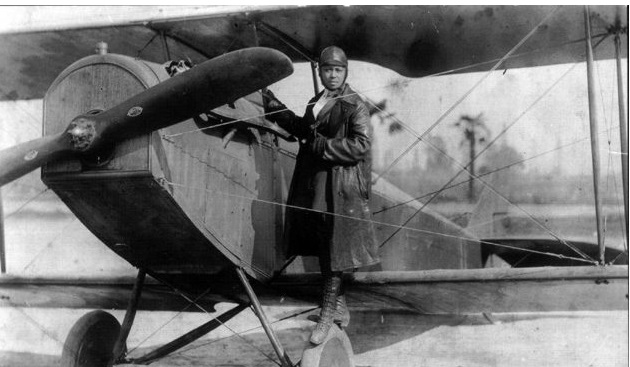
Bessie Coleman- Queen Bess of the Skies
You may have heard of Amelia Earhardt, but you probably don’t know about another accomplished yet tragic female aviator who lived at the same time. Bessie Coleman, born in 1862 in Texas, was the 10th of 13 children born in her family’s one-room home. Her father was of Native American descent and her mother was African-American. A bright and ambitious girl, Coleman was excited to enroll in college in Oklahoma but soon had to leave for financial reasons.
Instead, she moved to Chicago, where her brother lived, and became a manicurist. Although she didn’t enjoy her work, she loved to hear the stories of the pilots in the city who had recently returned from World War I. She quickly resolved to become a pilot.
Determined to fly
Everywhere she went, she was rejected. Few schools would allow women to fly, let alone African-American and Native American women. When newspaper publisher Robert Abbott heard her story, however, he financed a trip to Paris for Bessie and allowed her to train with great French pilots. There, she became the first black woman and first Native American to earn an aviation pilot’s license. When she returned to the USA, she became a sensation in the media.
She capitalized on this attention to become a “barnstorming” stunt flier, performing dangerous maneuvers in the air for the enjoyment of an audience. Going by the nickname “Queen Bess,” Coleman spent five years thrilling crowds with her superior skill. Now her race and gender became reasons for audiences to buy tickets rather than reasons to refuse her opportunities. She once said, “The air is the only place free from prejudices.”
A fateful flight
In 1926, Coleman set off on a flight in a newly-purchased Curtiss JN-4 plane. It would be her last air journey. Her manager, William D. Wills, had admitted that the plane was badly maintained and that he had had to make three landings along the way while flying the plane from Dallas to the site of Coleman’s air show in Florida. Shortly after takeoff, the plane suddenly dove and spun out of control. Coleman, who was not wearing her seatbelt due to planning a stunt, was flung from the plane 2,000 feet from the ground. Both she and Wills perished in the accident. 10,000 people attended her funeral in Chicago.
Coleman’s legendary name did not die with her. Roads at many international airports are named for her, as are schools in her home state of Texas and a public library in Chicago. She was posthumously inducted into the National Aviation Hall of Fame in 2006.
Read more about Coleman and other great female aviators in this article from COBBLESTONE Magazine.

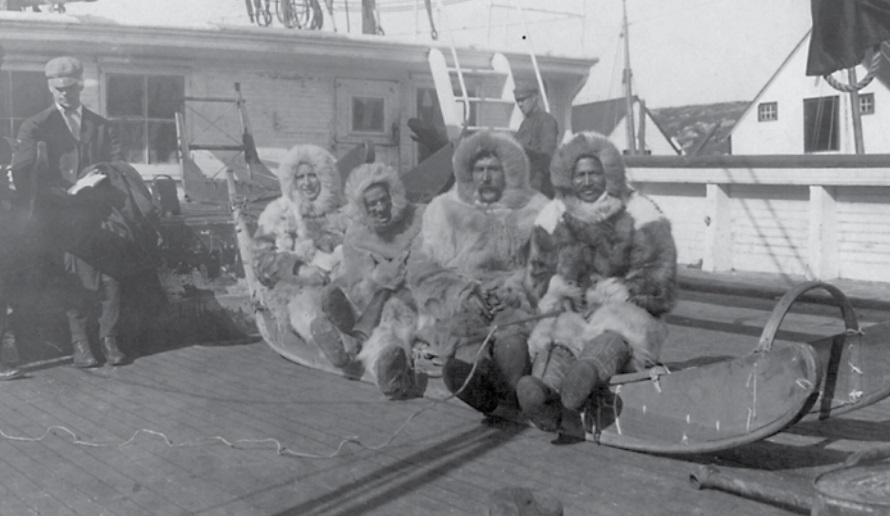
Matthew Henson- Master of all trades
In 1887, Admiral Robert E. Peary walked into the Steinmetz and Sons store to buy a hat for a trip to the tropics. He left with both a hat and a newly-hired personal assistant to join him on the journey. 21-year-old former stockman Matthew Henson, recommended by his employer, would soon become a figure for the history books.
An unexpected career
Born in Charles County, Maryland, Henson was orphaned at eight years old and worked odd jobs to support himself. When he was only 12, he worked as a cabin boy on a ship. The skipper, Captain Childs, taught Henson to read and write and showed the skills he’d need to know at sea. Unfortunately, Henson’s later employers weren’t as kind or generous as Childs. Faced with racism and poor working conditions, he tried other jobs—landing at last in the hat store.
Henson’s experience in many trades paid off. He helped the surveying team and even constructed Peary’s headquarters in the jungles of Nicaragua. His adaptability, strength, and endurance so impressed Peary that he asked Henson to accompany him to a far different part of the world: the arctic.
Between 1891 and 1909, Henson accompanied Peary on several expeditions north. When people criticized Peary for choosing a black man to accompany him, he simply replied, “I cannot get along without him.”
Full honors
One of Henson’s many talents was his ability to quickly learn the Inuit language. Before long, he spoke it better than anyone else in the expedition. The Inuits, who nicknamed him Maripaluk (which means “Matthew the Kind One” or “Dear Little Matthew”), taught him to drive a dog team and hunt seals and walrus. He also saved Peary’s life from both a charging musk ox and gangrene from frostbite.
After the last polar expedition in 1909, Henson wrote a book called A Negro Explorer at the North Pole, but unlike Peary, he didn’t become a national celebrity right away. Instead, he found work at the U.S. Customs department as a messenger and worked there for 40 years.
Later in life, he finally received credit for his great achievements. Congress awarded him a U.S. Navy Medal, the New York Explorers Club made him an honorary member, a school in Baltimore was named for him, and President Dwight D. Eisenhower even received Henson and his wife at the White House. Henson passed away in 1955 and was buried in New York City. But in 1988, his body was re-interred with full military honors next to Peary in Arlington National Cemetery.
Discover more about Henson in this article from COBBLESTONE Magazine.
Who is your favorite lesser-known figure in Black history? We’d love to hear your thoughts!


